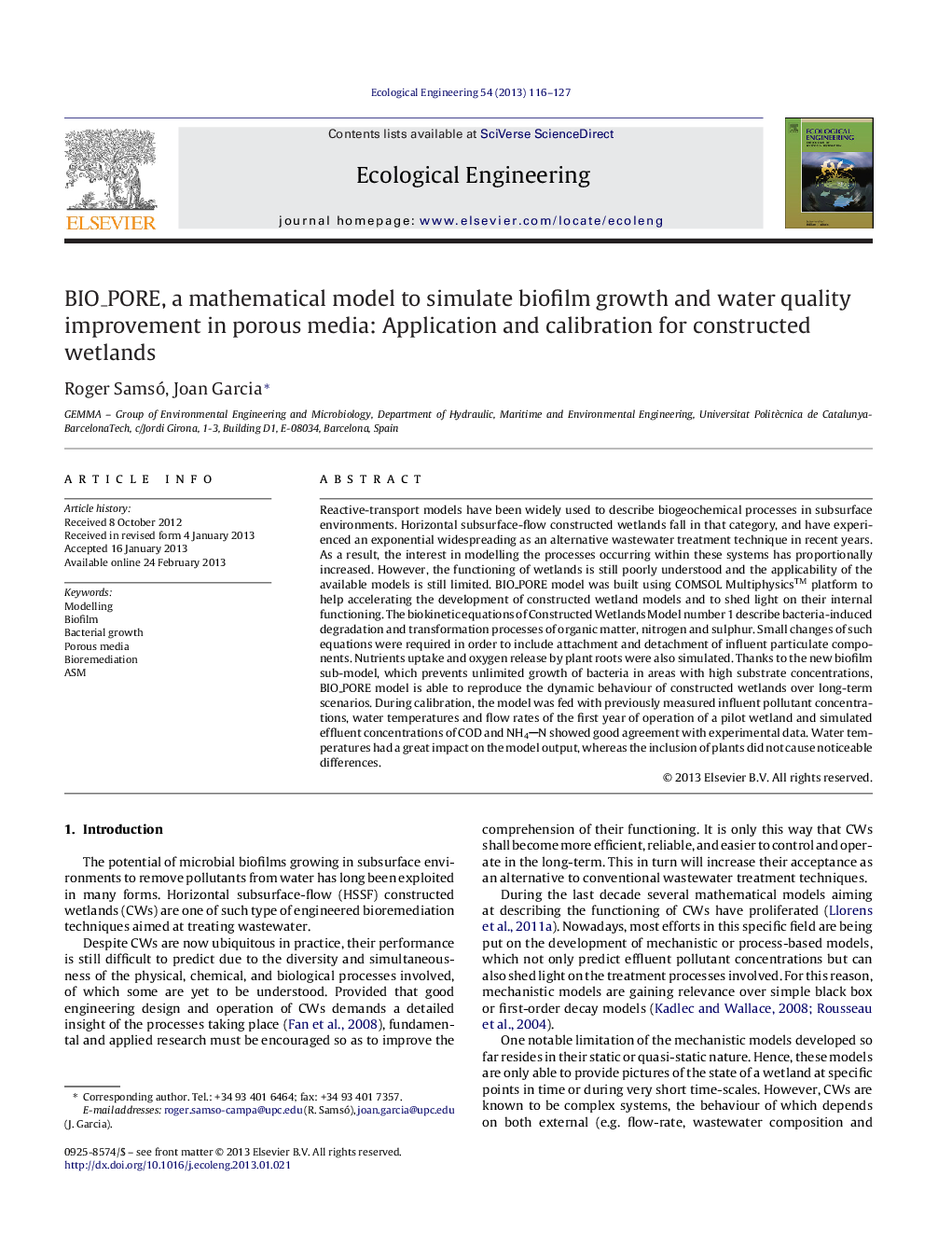| Article ID | Journal | Published Year | Pages | File Type |
|---|---|---|---|---|
| 4389800 | Ecological Engineering | 2013 | 12 Pages |
Reactive-transport models have been widely used to describe biogeochemical processes in subsurface environments. Horizontal subsurface-flow constructed wetlands fall in that category, and have experienced an exponential widespreading as an alternative wastewater treatment technique in recent years. As a result, the interest in modelling the processes occurring within these systems has proportionally increased. However, the functioning of wetlands is still poorly understood and the applicability of the available models is still limited. BIO_PORE model was built using COMSOL Multiphysics™ platform to help accelerating the development of constructed wetland models and to shed light on their internal functioning. The biokinetic equations of Constructed Wetlands Model number 1 describe bacteria-induced degradation and transformation processes of organic matter, nitrogen and sulphur. Small changes of such equations were required in order to include attachment and detachment of influent particulate components. Nutrients uptake and oxygen release by plant roots were also simulated. Thanks to the new biofilm sub-model, which prevents unlimited growth of bacteria in areas with high substrate concentrations, BIO_PORE model is able to reproduce the dynamic behaviour of constructed wetlands over long-term scenarios. During calibration, the model was fed with previously measured influent pollutant concentrations, water temperatures and flow rates of the first year of operation of a pilot wetland and simulated effluent concentrations of COD and NH4N showed good agreement with experimental data. Water temperatures had a great impact on the model output, whereas the inclusion of plants did not cause noticeable differences.
Graphical abstract.Figure optionsDownload full-size imageDownload as PowerPoint slideHighlights► A reactive-transport model for porous media is presented and calibrated for constructed wetlands. ► Simulated COD and NH4N concentrations successfully matched experimental data. ► Bacteria growth-limiting functions allowed long-term simulations. ► These functions represent a significant advance over previous implementations of CWM1.
